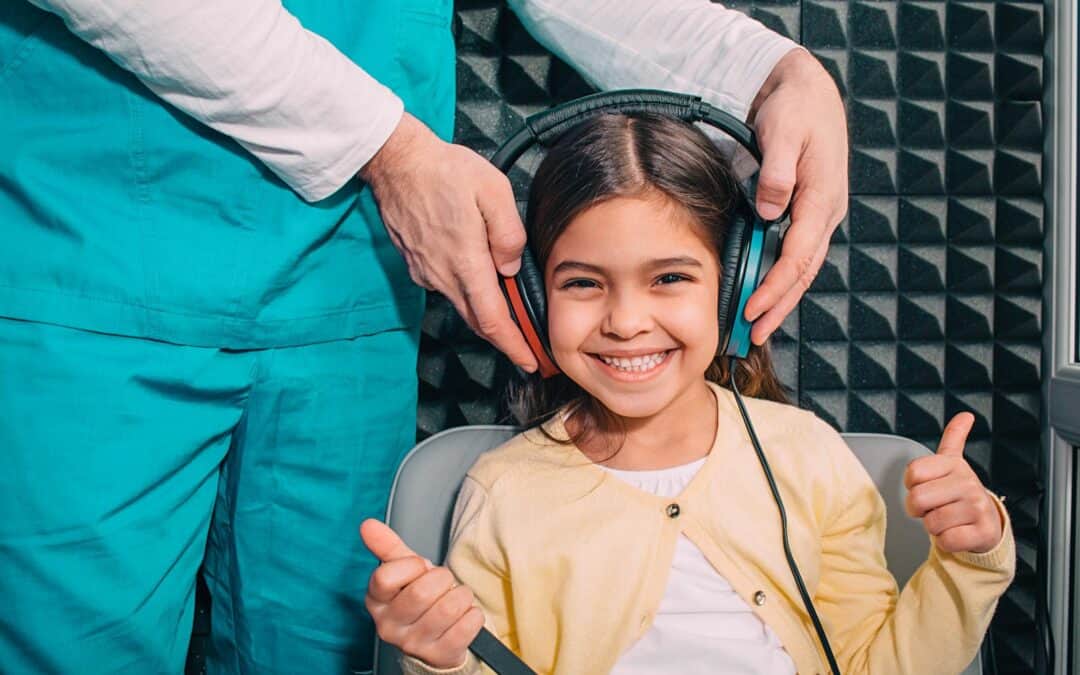March is almost here, and this means we are finally starting to see the other side of Winter. Regardless of if the groundhog saw her shadow or not, you are likely starting to see the crocuses show a bright purple pop that means things are going to be much more colorful very soon. This may mean getting out more and connecting to more people after a long winter. If you’ve been finding it hard to follow conversations recently it could signal a hearing loss.
Before Spring truly unleashes a renaissance of social events and outdoor activity socialization, make sure you know the status of your hearing. This and every March 3rd, is World Hearing Day- an international celebration and campaign led by the World Health Organization (WHO) to raise awareness around hearing loss, and promote treatment. The theme of this year is “ear and Hearing care for all”. This March is a great time to celebrate World Hearing Day by scheduling a hearing exam!
Hearing Loss—a Global Issue
In the United States alone, hearing loss is estimated to affect 48 million people of all ages and demographics. On a global scale, the effects are stifling, affecting an estimated 466 million people—93 percent adults and 7 percent children. While age-related hearing loss is the most common cause affecting one in three people 65 and older and half of those 75 and up, it affects people of all ages. In fact, WHO estimates that 1.1 billion young people between the ages of 12 and 35 are at risk of hearing loss due to unsafe levels of noise exposure. If trends don’t change WHO projects that by 2050 the world toll of hearing loss may double to 900 million—which is why World Hearing Day is so important for raising awareness and changing attitudes around hearing loss.
Understanding Hearing Loss
While some cases of hearing loss can be reversed simply by clearing a blockage of earwax or curing an ear infection, 90 percent of cases of hearing loss are considered sensorineural. Sensorineural hearing loss occurs when the tiny cells within the inner ear become damaged, blocking the transfer of sound from the ears to the brain. Past the eardrum, tiny ossicle bones and within the snail shaped cochlea, lies tiny hair like cells called stereocilia, surrounded in fluid. When sound vibrations move into the cochlea, they move the fluid which in turn stimulates the stereocilia to transform these sound waves into electrical impulses. However, the stereocilia are incredibly fragile and can be damaged by a wide range of causes from inadequate blood flow due to chronic heart and health issues – to exposure to loud noise. Even a blow to the head or taking the wrong medications can cause permanent hearing loss. It is important to know the risks to your hearing, because once the cells of the inner ear have become damaged they can not be regenerated.
The Stigma of Hearing Loss
While there is no way to reverse 90 percent of cases of hearing loss which are considered sensorineural, hearing aids can help. These amazing electronic devices can be programmed based on a hearing exam to amplify the sounds and tones you struggle to hear, while leaving the rest to be heard with your existing hearing. However, despite overwhelming studies which show the benefits to your social life, mood, mobility and cognitive health, many think of hearing loss as a condition which only affects the elderly, putting off treatment for fear that hearing aids will make them appear old, or weak. The truth is that there is no weakness in taking steps to support your health as you age. When you take the leap to address your hearing health, you are not only making it easier for you to follow conversations on a daily basis, get out more, stay more active and support your cognitive health—you are showing others how amazing life with hearing aids can be.
Schedule a Hearing Test Today
With March just around the corner, take steps now to celebrate World Health day now by scheduling your next hearing exam with us today! A change in the world can start on an individual basis with you!

